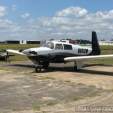Low Time Mooney Pilots, What is your Crosswind Comfort?
-
Members Online
- FTN Aviation
- SKI
- Igor_U
- Jackk
- SilentT
- jager3
- 201Mooniac
- gdship
- WilliamR
- MikeOH
- a.klein
- Schllc
- mgabel4
- Tom F
- DC_Brasil
- bonal
- eman1200
- wstull87
- CCowboy
- Skyland
- caractacuspdoom
- Mufflerbearing
- LOCOLJ
- exM20K
- Cody Stallings
- Sabremech
- varlajo
- Jim Peace
- tclimb
- IvanP
- Aerodon
- hammdo
- Patrick Horan
- GeeBee
- hazek
- toto
- clh
- Greg Ellis


Recommended Posts